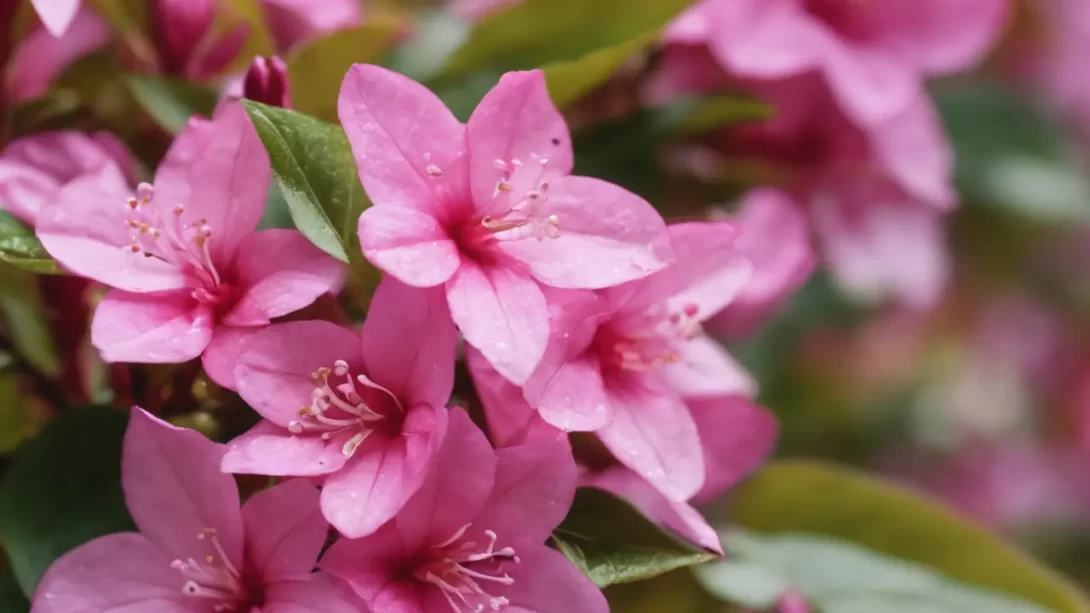Weigela, a beloved garden shrub known for its vibrant flowers and easy-care nature, is a favorite among gardeners. Proper pruning is essential to maintain its health, encourage bountiful blooms, and enhance its natural beauty. The best time to prune Weigela largely depends on the variety and local climate, but generally, the optimal period is just after its blooming phase in late spring or early summer. This timing ensures that the plant’s flowering potential for the next season is not compromised.
Weigela’s Growth Habits
To prune Weigela effectively, it’s important to understand its growth habits. This deciduous shrub typically flowers on old wood, meaning the blooms appear on branches grown in previous seasons. However, some newer varieties also bloom on current year’s growth. Recognizing the difference between old and new wood is crucial. Old wood is usually thicker with a rougher bark, while new wood is smoother and more flexible. This knowledge helps in making informed decisions about which branches to prune for optimal blooming.
Tools and Safety for Pruning Weigela
Before beginning the pruning process, gathering the right tools is essential. You will need sharp bypass pruners for small branches, loppers for medium branches, and a pruning saw for larger limbs. Ensure that all tools are clean and sharp to make precise cuts and reduce the risk of disease. Safety is paramount; wear gloves and protective eyewear to prevent injuries. If working on larger shrubs, consider using a sturdy ladder and having someone assist you.
Basic Pruning Techniques
Understanding basic pruning techniques is key. Thinning cuts involve removing entire branches at their point of origin to improve air circulation and light penetration. Heading back cuts are made to reduce the length of a branch and encourage bushier growth. For rejuvenation, more aggressive cuts may be needed. Always cut at a 45-degree angle just above a bud facing the outside of the shrub. This promotes healthy growth and prevents water accumulation which can lead to rot.
Pruning Young Weigela Plants
When pruning young Weigela plants, the focus should be on encouraging a strong, healthy structure and promoting dense, bushy growth. In the first year, minimal pruning is required; just remove any dead or damaged wood. Starting in the second year, begin shaping the plant by selectively thinning out crowded areas and cutting back overly long branches. This initial shaping sets the foundation for the plant’s future growth and blooming pattern.
Seasonal Pruning of Weigela
Pruning Weigela varies slightly with the seasons. In late winter or early spring, before new growth begins, remove any dead or damaged wood. This is also a good time for light shaping and correcting any undesirable growth from the previous season. The most important pruning occurs immediately after the spring blooming period. Trim back the flowered branches to encourage new growth that will produce next year’s blooms. For varieties that bloom on new wood, a late winter pruning can help stimulate flowering.
Rejuvenating Overgrown Weigela
Overgrown Weigela shrubs can be rejuvenated with more aggressive pruning. This is typically done in late winter or early spring. Start by removing about one-third of the oldest, thickest stems at ground level. This opens up the plant and stimulates new growth from the base. In the following year, prune another one-third of the old stems, and so on, until the shrub has been completely rejuvenated over several seasons. This gradual approach helps the plant maintain its vigor and bloom capacity.
Maintenance Pruning for Mature Weigela
Mature Weigela plants require regular maintenance pruning to keep them healthy and well-shaped. Annually, after the blooming period, prune about 20-30% of the oldest stems to ground level to encourage new growth. Also, trim back branches that have flowered to shape the shrub and stimulate new flowering shoots. Pay attention to the overall form of the plant, aiming to maintain a natural, yet tidy, appearance. Remove any crossing or rubbing branches to prevent damage and disease.
Managing Common Issues Through Pruning
Pruning can also address common issues like sparse blooming, legginess, or disease. If the Weigela is not blooming profusely, it might be due to excessive old wood. In this case, rejuvenation pruning can help. For leggy plants, cutting back some of the longest branches encourages denser growth. When you spot signs of disease or pest infestation, promptly remove the affected branches to prevent further spread. Always clean your tools after dealing with diseased material to avoid contaminating other plants.
Aftercare Following Pruning
Proper aftercare is crucial for Weigela’s recovery and continued health after pruning. After completing the pruning process, clean up all the cuttings and debris from around the plant. This helps prevent the spread of any pests or diseases and keeps the garden tidy. Providing the shrub with adequate water, especially in the weeks following pruning, aids in its recovery. A layer of mulch around the base can help retain soil moisture and regulate temperature. If necessary, apply a balanced fertilizer to support new growth, but avoid over-fertilizing as this can lead to excessive leafy growth at the expense of blooms.
Regular Maintenance Practices
Apart from pruning, regular maintenance is key to keeping your Weigela healthy and thriving. Ensure the plant receives enough water, particularly during dry spells, but avoid overwatering. Weigela prefers well-drained soil. Check periodically for signs of pests or disease and take appropriate action if needed. A yearly application of compost or a balanced fertilizer can provide necessary nutrients, particularly if your soil is less than ideal.
Conclusion
Pruning is a vital aspect of caring for Weigela, contributing significantly to its health, shape, and flowering. By understanding the growth habits of Weigela and employing proper pruning techniques, gardeners can ensure their shrubs are vibrant and floriferous. Remember, each Weigela may have its unique needs based on its variety and local growing conditions. With the right care and attention, Weigela can be a stunning and resilient addition to any garden. Embrace the process of pruning as a way to connect with and enhance the natural beauty of your garden.



